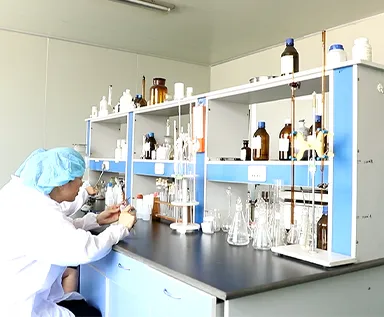what are culture plates
Understanding Culture Plates A Vital Tool in Microbiology
In the world of microbiology, culture plates serve as an essential tool in the study and identification of microorganisms. These plates, which contain a nutrient-rich agar medium, provide an environment conducive to the growth of bacteria, fungi, and other microorganisms. The use of culture plates has revolutionized the field of microbiology, allowing scientists to explore and understand the intricate world of microbes that inhabit our environment, food, and even our bodies.
What Are Culture Plates?
Culture plates are shallow dishes made of glass or plastic that are filled with a gelatinous substance known as agar. Agar is derived from seaweed and serves as a solidifying agent that, when combined with various nutrients, creates a suitable environment for microbial growth. These plates come in a variety of types, depending on the specific needs of the organisms being cultured. For example, selective media contain substances that inhibit the growth of unwanted bacteria, allowing for the isolation of a particular strain. Differential media, on the other hand, include indicators that help identify specific microbial characteristics based on their metabolic activities.
Types of Culture Plates
There are several types of culture plates, each designed for specific applications
. Some widely used types include1. Nutrient Agar Plates These are general-purpose media that provide the basic nutrients required for the growth of non-fibrous microorganisms.
2. Blood Agar Plates These plates contain red blood cells and are enriched media that promote the growth of fastidious organisms while allowing for the observation of hemolytic activity.
what are culture plates

3. MacConkey Agar Plates Designed to differentiate between lactose fermenters and non-fermenters, these plates are selective for Gram-negative bacteria and are crucial in the identification of enteric pathogens.
4. Sabouraud Dextrose Agar Plates Specifically formulated to encourage fungal growth, these plates have a higher concentration of sugar and a lower pH, making them ideal for culturing yeast and mold.
Applications of Culture Plates
Culture plates are used in various fields, including clinical microbiology, environmental microbiology, and food safety testing. In clinical settings, they are pivotal for diagnosing infections. By isolating and identifying pathogens from a patient's sample, healthcare professionals can provide effective treatment options. Environmental microbiology studies microorganisms in their natural habitats, utilizing culture plates to evaluate the diversity and roles of microbes in ecosystems. Food safety testing often relies on culture plates to detect pathogens in food products, ensuring consumer safety.
The Process of Culturing Microorganisms
The process of using culture plates typically involves several steps. First, samples containing microorganisms are collected, often using sterile techniques to avoid contamination. Next, these samples are spread onto the surface of the culture plate using a sterile loop or spreader. The plates are then incubated at appropriate temperatures to allow the microorganisms to grow. After several hours to days, colonies will emerge, and scientists can observe their morphology, color, and other characteristics, aiding in identification.
Conclusion
Culture plates are indispensable in the realm of microbiology. They not only facilitate the growth and identification of various microorganisms but also contribute significantly to our understanding of the microbial world. As science and technology continue to advance, the methods and materials used in culturing microorganisms are continually evolving, promising a future where even more complex microbial interactions can be explored. The importance of culture plates in research, healthcare, and food safety cannot be overstated, solidifying their role as a cornerstone in the study of life at the microbial level.
-
Aesthetic Makeup Spray Bottles | Fine Mist Empty RefillableNewsAug.19,2025
-
White Plastic Veterinary Vaccine Vials | Lab Liquid BottlesNewsAug.18,2025
-
Plastic Medicine Liquid Bottle: Secure Flip Top Drug VialsNewsAug.17,2025
-
Durable 250ml Blue Plastic Vaccine Vial for Lab & Vet UseNewsAug.16,2025
-
Sterile Virus Sample Tubes: Secure & Reliable Specimen CollectionNewsAug.15,2025
-
White 250ml Plastic Vaccine Vial for Lab & Vet MedicineNewsAug.14,2025
























